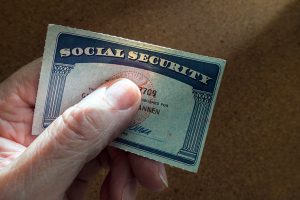Common Ways Consumers Waste Money
Date: November 16, 2016
Whether you’re motivated to save for something really special like a new house, or you’re just looking to trim some fat from your budget, figuring out where you’re wasting money is one of the first places to start. Cutting the waste from your budget causes minimal pain because you’re reducing expenses that you’re receiving minimal benefits from, freeing up money for the things you love. Who is really going to miss paying an account maintenance fee to their bank every month?
Cut Down on Food Waste
According to the National Resources Defense Council, Americans waste 40 percent of edible food. Make an effort to shop more carefully by using a list and avoiding impulse buys to cut down on the amount you waste. Don’t buy more than you can eat. Although you can often get items at a cheaper price per pound when you buy large quantities, you’ll end up paying more if you throw the food out uneaten.
Know the differences between the various dates printed on groceries. The “sell by” date just tells the grocery store when it should take the product off the shelves. The “best before” date is when the item has peak flavor. Neither means that the product is unsafe to use after that date.
Banish Bank and Credit Card Fees
A $3 ATM fee here or a $15 overdraft fee there might not seem like much, but these extra charges can add up fast if you regularly incur them. Look for a checking account that doesn’t charge a monthly fee if you maintain a minimum balance. Keeping a minimum balance also helps you avoid overdraft fees.
If your current bank doesn’t offer these terms, check out a local credit union. If you have a healthy balance in your checking account but you have trouble remembering to pay your credit cards, consider signing up for automatic payments. You won’t have to worry about incurring late charges.
Avoid Impulse Purchases
Everyone has gone to the store looking for a few items only to discover a previously unheard-of item that suddenly seems like a must-have. However, most people also know the feeling of watching that same item gather dust in the garage weeks after bringing it home. Try implementing a minimum waiting period between the time you see an item and when you allow yourself to buy it. For smaller items, try at least half an hour. Use a longer waiting period as the items get more expensive to make sure you really want them.
Beware of Advertising Tactics
Everyone loves free stuff, but even “free” items can become quite expensive if they lure you into buying full-price items you don’t need. Psychologically, receiving something for free makes it harder for most people to say no to purchasing something else. Compare how much you’re willing to pay for an item against its sales prices rather than the suggested retail price, which might have only been used for a week before the big “sale.” For example, $40 in savings sounds great when a sweatshirt is 50 percent off the $80 retail price, but if you value a new sweatshirt at $30, you’re paying 33 percent more than you think the clothing is worth to you.
Quicken has made the material on this blog available for informational purposes only. Use of this website constitutes agreement to our Terms of Use and Privacy Policy. Quicken does not offer advisory or brokerage services, does not recommend the purchase or sale of any particular securities or other investments, and does not offer tax advice. For any such advice, please consult a professional.


